
Opinion
Which is the better Samurai game: Ghost of Yōtei or Assassin’s Creed: Shadows?
by Domagoj Belancic
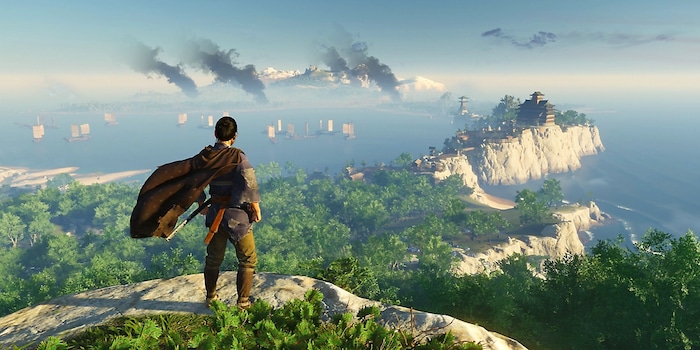
In Assassin’s Creed Shadows, the series finally heads to feudal Japan. But how does the samurai adventure measure up to other games?
Samurai fans currently have every reason to celebrate. Three top-notch games with several similarities have been released in recent years: Assassin’s Creed Shadows (Ubisoft, 2025), Rise of the Ronin (Koei Tecmo, 2024), and Ghost of Tsushima (Sucker Punch, 2020).
All three feature large, open play areas in a historical Japanese setting. The gameplay also shares a lot of similarities with intense katana duels and stealth mechanics.
Which game will win the Samurai crown?
The story as a whole is also too long. As the game progresses, it degenerates into a confusing jumble lacking in substance, without any particular highlights, notable characters or exciting twists. I lose track of my mission and understand less and less why I have to murder certain targets.
The plot of Rise of the Ronin begins at the end of the 19th century. Japan’s in a state of civil war. I find myself as a masterless swordsman caught between two factions (the emperor and the shogun) and repeatedly switching sides. The story happens at lightning speed, with characters introduced and discarded just as quickly. I aimlessly murder soldiers, princes, and foreigners. Why? That doesn’t seem to matter much in this chaotic story.
Despite its simple story, Ghost of Tsushima’s the most successful. Both Assassin’s Creed Shadows and Rise of the Ronin feel cluttered and unnecessarily complicated. Sometimes less is more.
My story ranking:
Generally speaking, Rise of the Ronin isn’t a great-looking game. While traversing the poorly detailed game world, I encounter muddy textures and ugly pop-in effects. The characters also seem outdated with their wooden animations. Despite this, the game still frequently stutters for inexplicable reasons. There are some enjoyable moments every now and then, but they’re exceptions.
Although Ghost of Tsushima’s already five years old, it still looks beautiful. Unlike the other two games, Jin’s adventure takes a more stylised, less realistic approach. Bold colours and high contrasts make the island world look cartoonish at times. There are some compromises in the details in the distance, but the game always runs smoothly.
Ubisoft’s samurai epic clearly deserves first place because it sets new standards for the genre. Ghost of Tsushima easily wins out against the occasionally drab visuals of Rise of the Ronin.
My presentation ranking:
I have to explore the open world in Assassin’s Creed Shadows more organically than in previous games in the series. The overview map’s no longer cluttered with symbols and to-do lists. A great change in theory, but it doesn’t quite work in practice – because activities in the open world are only moderately exciting or repetitive. I constantly have to infiltrate castles and murder someone. It’s always the same routine. Yawn.
The side activities and mini-games are also unimpressive and feel like filler designed to increase the game’s scope. It’s a shame that one of the most beautiful open game worlds of all time doesn’t offer a bit more substance. As the game progresses, historical Japan degenerates into a lifeless and repetitive setting.
Rise of the Ronin makes no secret of the fact that its gameplay loop is essentially ticking off an open-world list. The overview map’s littered with missions, mini-games, and locations. Most of the activities in the open world consist of liberating villages or city districts from vicious bandits. These missions barely differ, and I have absolutely no motivation to liberate every occupied territory.
Unlike Shadows and Ronin, Ghost of Tsushima doesn’t overdo it in terms of number of activities. Yes, there are plenty of occupied villages and Mongol camps to clear out. But not an infinite number – the island of Tsushima’s too compact for that.
The changes to Ubisoft’s formula aren’t enough to make the game world in Assassin’s Creed Shadows exciting. The open-world design of Rise of the Ronin is very conservative, but it works well thanks to engaging activities and smaller environments. Ghost of Tsushima is the best, no doubt – if only because of the organic navigation through the island world.
My open world ranking:
In Assassin’s Creed Shadows, I travel with both Yasuke and Naoe, either on foot or on horseback. Occasionally, I even treat myself to a boat trip. When I play as Naoe, I’m at my most agile. The graceful shinobi’s able to scale almost all vertical obstacles with her grappling hook. She can climb and jump to perfection. As is typical for Assassin’s Creed, the numerous obstacle course sections are incredibly cool to look at and beautifully animated.
I’m a bit more limited with the beefy Yasuke. The giant isn’t particularly good at climbing and often makes clumsy moves. While I can (almost) always switch between the two heroes in the open world, this comes with annoying loading times.
I’d actually like to see Rise of the Ronin take first place – I love that stupid paraglider. But Naoe from Assassin’s Creed Shadows is unbeatably nimble with her agile shinobi style. The grappling hook and climbing make the game world much more vertical and exciting. The wimp Jin Sakai can console himself with record-breaking fast travel in last place.
My movement ranking:
There are also secondary weapons in the form of bows, revolvers, rifles, and even flamethrowers. Quickly unlocking new skills in the various skill trees is fun and encourages experimentation. The high difficulty level always keeps me on my toes.
The skill trees also adhere to the principle that less is more. This makes every skill you earn feel essential. I especially want to highlight the unique katana duels that Jin fights against select opponents. When two swordsmen face off, whoever draws their blade at the right moment wins the duel. The loser dies in a single attack.
Assassin’s Creed Shadows’ simplistic combat system and the lack of balance between Naoe and Yasuke drops it into last place. With its Soulslike influences, Rise of the Ronin deserves second place. Ghost of Tsushima is clearly the frontrunner with its cinematic yet challenging combat – despite its smaller arsenal of weapons.
My combat system ranking:
Big Yasuke is almost impossible to sneak with. The samurai always kills enemies loudly, so stealth’s often not an option. Here, too, it annoys me that I can’t switch to Naoe during a mission if I realise Yasuke’s approach is too brutish.
Ghost of Tsushima takes the title with cool gadgets and a smooth transition between action and stealth. In second place, Assassin’s Creed Shadows impresses with its stealth gameplay featuring Naoe, but disappoints with Yasuke. Rise of the Ronin places a clear focus on open combat and ends up in last place.
My stealth ranking:
Ghost of Tsushima takes the top spot. It impresses most with its story, open-world design, combat system, and stealth system. In second place, Assassin’s Creed Shadows scores points primarily with its beautiful game world and fluid parkour movement. Rise of the Ronin comes up short in all categories – but I’d still recommend it to samurai fans.
My love of video games was unleashed at the tender age of five by the original Gameboy. Over the years, it's grown in leaps and bounds.
This is a subjective opinion of the editorial team. It doesn't necessarily reflect the position of the company.
Show all
Opinion
by Domagoj Belancic

Opinion
by Domagoj Belancic
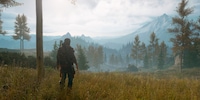
Opinion
by Domagoj Belancic
Now, I’m pitting the three samurai games against each other in six categories that I consider particularly important for the genre: Story, Presentation, Open-world design, Movement through the game world, Combat system, and Stealth. I’m creating a ranking with points for each category (1st place: 3 points, 2nd place: 2 points, 3rd place: 1 point) and adding them up at the end.
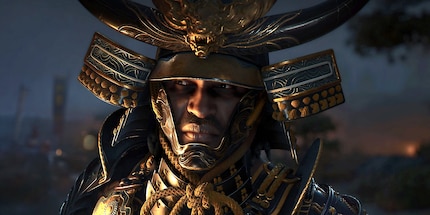
Assassin’s Creed Shadows is set during the late Sengoku period in the 16th century. Foreign samurai Yasuke joins forces with Japanese shinobi Naoe to take on a power-hungry shadow organisation. Unfortunately, the narrative structure is unnecessarily fragmented and complicated, with flashbacks and time jumps. The game doesn’t adequately convey Yasuke’s journey from slave to samurai.
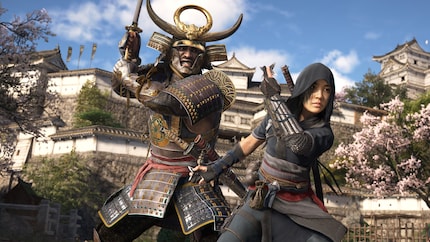
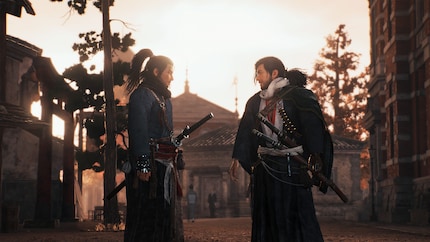
Unlike the jam-packed storylines of the other two samurai adventures, the plot of Ghost of Tsushima is refreshingly simple. It’s set during the first Mongol invasion of Japan in the 13th century. As samurai warrior Jin Sakai, I attempt to drive the Mongols from the Japanese island of Tsushima. Jin uses increasingly devious methods that violate the samurai code and becomes the feared Ghost of Tsushima. The story isn’t rocket science, the characters aren’t particularly complex, and there are no major twists. It doesn’t matter, though, because the plot serves its purpose perfectly. The goal’s clear, the enemies are clear – I don’t need any more motivation than that.
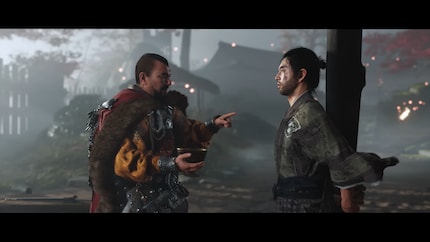
The game world of Assassin’s Creed Shadows is the most beautiful I’ve ever seen in an open-world title. The dense vegetation combined with the realistic wind and weather effects are particularly impressive. Combined with ray tracing-assisted lighting, the game conjures up dreamlike scenes on the screen. The icing on the cake’s the visual variety provided by the new season system. On the PS5 (Pro), Shadows also runs at a stable refresh rate despite its elaborate presentation. What more could you want?
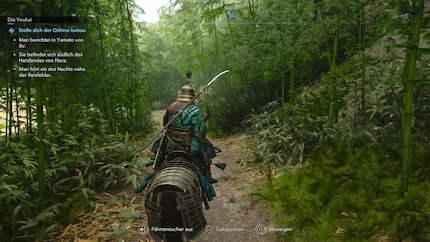
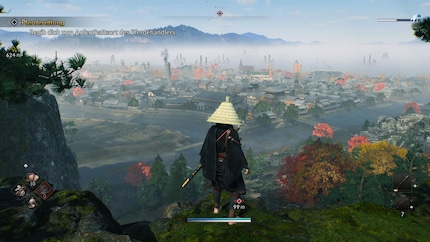
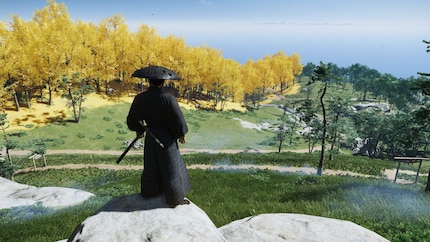
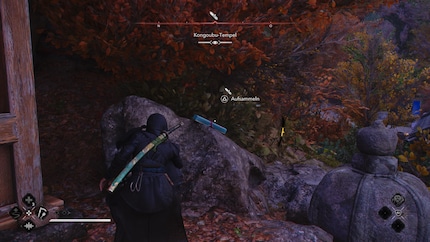
The smaller activities are better, and I feel like I find one every few metres. I collect hidden cats, earn high scores at shooting ranges and stealthily photograph specific subjects. While not particularly creative, the distractions are quickly resolved and give me valuable experience points and rare items. I’m constantly ticking something off my list and moving on. And because there are three smaller open-world areas instead of one large map, I feel like I’m making faster progress.
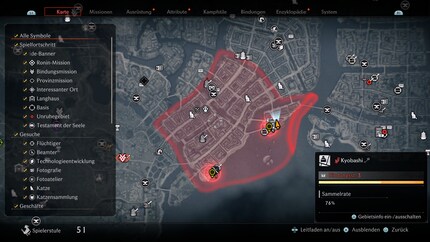
The game world of Ghost of Tsushima also uses multiple open-world clichés. A wide selection of side quests? Check! Countless collectible items? Check! Numerous mini-games? Check! What makes this game better than the other two, though, is that it organically guides me to these activities using elements in the game world. Columns of smoke in the distance indicate that people need my help. Birds and foxes guide me to exciting locations. Awesome! Another unique aspect is if I mark a location on the map, the wind shows me the way – without a compass or mini map.
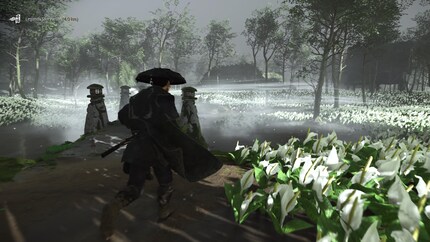

Rise of the Ronin is particularly impressive because of its paraglider. I use it to fly unnoticed over enemy groups or explore the game world with a bird’s-eye view. It looks absolutely ridiculous, but it’s incredibly fun. My character also has a grappling hook in his repertoire – but I can only use it at certain anchor points. I’m also very limited when it comes to climbing. My samurai can only climb in certain places. Otherwise, I travel either on foot or on my trusty horse.
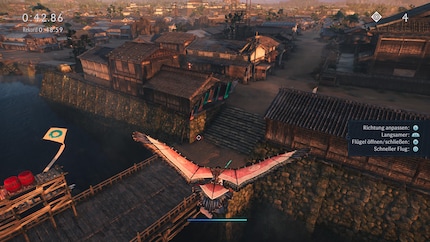
The movement in Ghost of Tsushima’s unspectacular. I explore the open game world on foot or on horseback. I can only climb and use my grappling hook at certain points in the game world. When it comes to heights, Jin Sakai’s quite a wimp. Even the slightest fall into the depths almost kills him. I don’t have any exciting gadgets for exploring the world. That’s why fast travel deserves its name. If I select a point on the map, I beam myself there in a second.
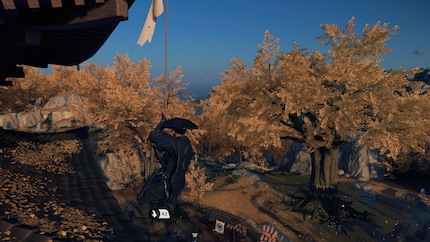
The open battles in Assassin’s Creed Shadows are mainly designed for the mighty samurai Yasuke. He chops everything to pieces with his almost superhuman strength. The available weapons are katana (swords), naginata (spears), kanabou (maces), guns, and bows. Despite this large arsenal, the combat system’s very simple. I can launch strong or weak attacks, dodge and block. Particularly powerful special attacks charge up with successful attacks. Unfortunately, most enemies can simply be defeated with blunt blows. At least the whole thing’s beautifully brutal(!).
If I get into open combat with Naoe, I’m at a disadvantage. Her arsenal consists of katana (swords), kusarigama (sickle with chain), tantou (knives), and thrown weapons such as shuriken. The nimble shinobi does little damage and suffers much more. Fights with her are tougher, which makes it all the more annoying that I can’t switch characters after starting a mission. For both characters, there’s a skill tree for each weapon, with attacks and passive abilities that can be unlocked. Only a few of them are truly exciting.
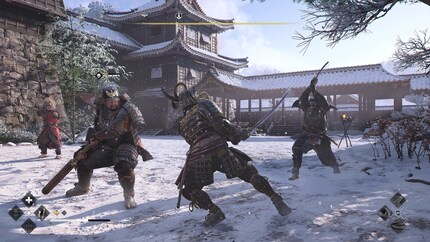
At times, the combat system in Rise of the Ronin is brutal and reminiscent of Soulslike games. When attacking, blocking, and dodging, I have to constantly keep an eye on my character’s stamina – otherwise I’m done for. The arsenal of weapons is extensive: there are various swords, spears, sabres, pole weapons, and bayonets. Different fighting styles are available for each weapon type, which I can change whenever I want during a battle. This is desperately needed, because some enemies can only be eliminated with the targeted use of specific weapons and styles.
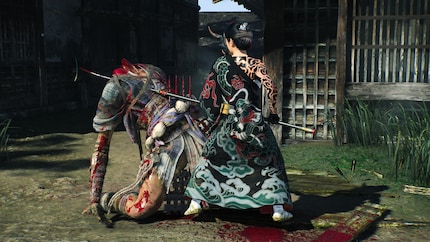
I love the cinematically staged fights in Ghost of Tsushima. They sometimes look like a choreographed dance – especially when Jin Sakai unleashes his crazy special attacks. The game proves that a large arsenal of weapons doesn’t automatically mean a better combat system. Jin only has his katana and a tantou as primary weapons. For long-range combat, he shoots a bow and arrow or throws objects like kunai (small daggers) or bombs. In Ghost of Tsushima, too, I use various fighting styles, constantly having to switch between them during combat to kill different types of enemies. Every now and then, I use Jin’s horse as a galloping weapon to run over enemies. It’s pretty fun.
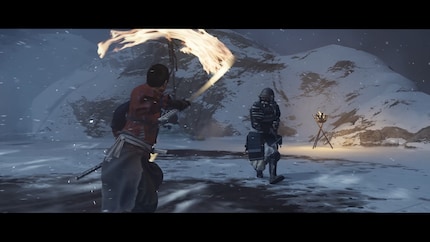
New to the stealth system in Assassin’s Creed Shadow is the focus on darkness. Enemies see me much less clearly in shadows – reminiscent of Splinter Cell. Moving while prone is also new and adds an additional dimension to the stealth gameplay. Combined with Naoe’s parkour skills, this results in a really fun, robust stealth system. The enemies are well-balanced – stupid enough to give me some freedom and smart enough to keep sneaking around exciting. With Naoe’s special ability, I can see enemies through walls and mark them. However, I’d have liked more exciting items for sneaking. Aside from bells and smoke bombs as distractions and silent throwable weapons such as shurikens, Naoe’s shinobi repertoire doesn’t offer much that’s particularly exciting.
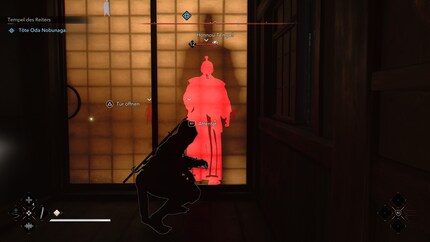
Stealth in Rise of the Ronin is kept simple, but boasts two cool gadgets. I often find myself in stealth mode on rooftops, flying from one roof to another with my paraglider. I use the grappling hook to pull enemies towards me and kill them from high above – it’s a bit reminiscent of Insomniac’s Spider-Man games. The enemies are as thick as two short planks. If I pull an enemy up and brutally murder them, hardly anyone notices. In Rise of the Ronin, I can also use an item to quickly see enemies through walls. That’s about it for notable stealth mechanics – Rise of the Ronin clearly focuses on open combat.
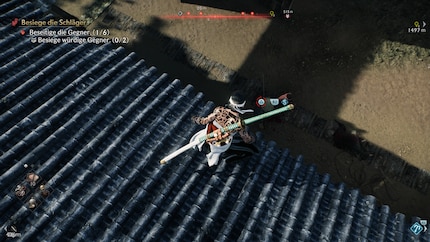
In Ghost of Tsushima, stealth mechanics become more important as the game progresses. The more Jin Sakai abandons the honourable samurai code, the more options I have for stealth. I like how interlinked game mechanics are with the story. In terms of freedom of movement, Naoe from Shadows clearly has the edge – Jin isn’t very athletic in comparison, nor as flexible when it comes to attacking enemy settlements. He does have some pretty cool gadgets, though.
Using projectiles from the blowgun, he poisons enemies or makes them hallucinate, causing them to attack their allies. With a bow and arrow, I easily take down distant Mongols – even in slow motion. I use bells or fireworks as a distraction. I particularly like the smooth transition between stealth and action. Enemies in Ghost of Tsushima are relentless – especially the nasty tracking dogs. If I’m spotted, I can quickly retreat with the help of smoke bombs and attack again from behind. I can take out up to three enemies at once with a chain assassination. An all-around successful and cinematically staged stealth package.
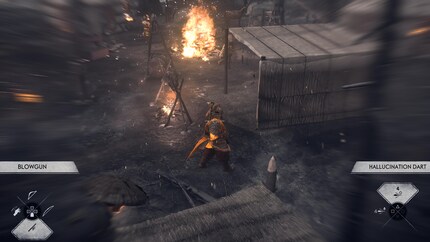
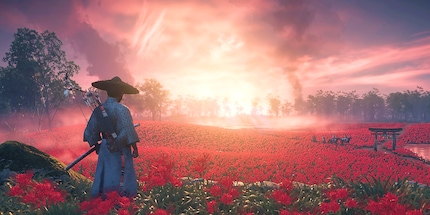
Which is your overall favourite?
The competition has ended.